Latest News
Spinal Canal stenosis
Spinal Canal stenosis is an abnormal narrowing (stenosis) of the spinal canal that may occur in any of the regions of the spine. This narrowing causes a restriction to the spinal canal, resulting in a neurological deficit. Symptoms include pain, numbness, paraesthesia, and loss of motor control. The location of the stenosis determines which area of the body is affected. With spinal stenosis, the spinal canal is narrowed at the vertebral canal, which is a foramen between the vertebrae where the spinal cord (in the cervical or thoracic spine) or nerve roots (in the lumbar spine) pass through.
There are several types of spinal stenosis, with lumbar stenosis and cervical stenosis being the most frequent. While lumbar spinal stenosis is more common, cervical spinal stenosis is more dangerous because it involves compression of the spinal cord whereas the lumbar spinal stenosis involves compression of the cauda equina. Thoracic spinal stenosis, at the level of the mid-back, is much less common.
In lumbar stenosis, the spinal nerve roots in the lower back are compressed which can lead to symptoms of sciatica (tingling, weakness, or numbness that radiates from the low back and into the buttocks and legs).
Cervical spinal stenosis can be far more dangerous by compressing the spinal cord. Cervical canal stenosis may lead to serious symptoms such as major body weakness and paralysis. Such severe spinal stenosis symptoms are virtually absent in lumbar stenosis, however, as the spinal cord terminates at the top end of the adult lumbar spine, with only nerve roots (cauda equina) continuing further down.
Cesrvical Canal Stenosis
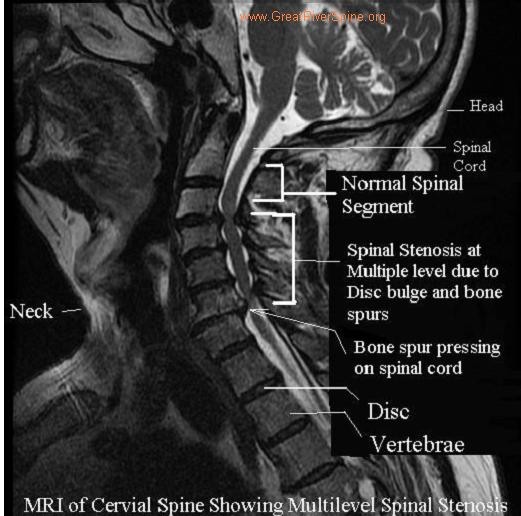
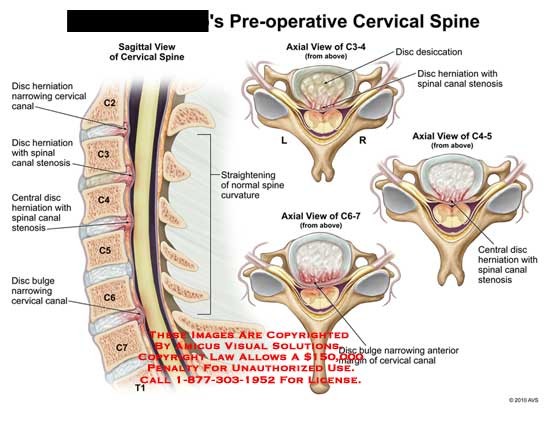
Lumbar Canal Stenosis
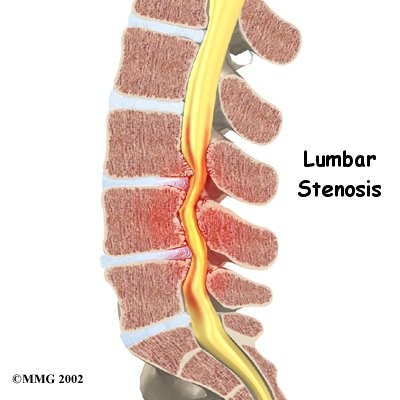
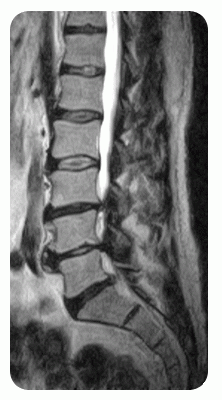
Signs and symptoms
- Signs and symptoms
- Numbness (63%)
- Weakness (43%)
- Bilateral symptoms (68%)
- Discomfort above and below knee (78%)
- Buttock / Thigh only (15%)
- Below the knee (7%)
Neurological disorders
- Pinched nerve, causing numbness.
- Intermittent neurogenic claudication characterized by lower limb numbness, weakness, diffuse or radicular leg pain associated with paresthesis (bilaterally), weakness heaviness in buttocks radiating into lower extremities with walking or prolonged standing.
- Symptoms occur with extension of spine and are relieved with spine flexion. Minimal to zero symptoms when seated or supine.
- Radiculopathy (with or without radicular pain) neurologic condition - nerve root dysfunction causes objective signs such as weakness, loss of sensation and of reflex.
- Cauda equina syndrome Lower extremity pain, weakness, numbness that may involve perineum and buttocks, associated with bladder and bowel dysfunction.
Causes
- Failed Back Surgery Syndrome ( FBSS)
- Body’s ligaments can thicken (ligamentum flavum)
- Bone spurs develop on the bone and into the spinal canal
- Intervertebral discs may bulge or herniate into the canal
- Facet joints break down
- Compression fractures of the spine, which are common in osteoporosis
Minimally Invasive Treatment Lines
- Minimally Invasive Lumbar Decompression (MILD):
Percutaneous IG-MLD using a specially designed tool kit (mild®) has been proposed as an ultra - minimally invasive treatment of central LSS. In this procedure, the epidural space is filled with contrast medium under fluoroscopic guidance. Using a 6-gauge cannula that is clamped in place with a back plate, single-use tools (portal cannula, surgical guide, bone rongeur, tissue sculpter, trocar) are used to resect thickened ligamentum flavum and small pieces of lamina. The tissue and bone sculpting is conducted entirely under fluoroscopic guidance, with additional contrast media added throughout the procedure to aid visualization of the decompression. The process is repeated on the opposite side for bilateral decompression of the central canal. The devices are not intended to be used near the lateral neural elements and are contraindicated for disc procedures.
Lumbar Canal Stenosis
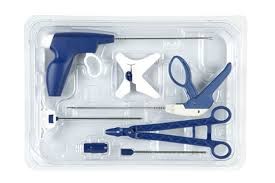
- Additional treatment lines:
- Biacuplasty for prolapsed discs: Continous radio-frequency on the annulus (outer layer of the disc) aiming to abolish the pain generated from the disc itself
- Radio-Frequency on medial branches which supply: ablation on medial branches which supply facet joints using continous radio-frequency
- Pulsed radio-frequency on dorsal root ganglions DRGs: Aiming for pain modulation at the level of affected DRGs
- Adhesolysis of the stenotic spinal canal using caudal RACZ catheter
- Biacuplasty for prolapsed discs: Continous radio-frequency on the annulus (outer layer of the disc) aiming to abolish the pain generated from the disc itself






